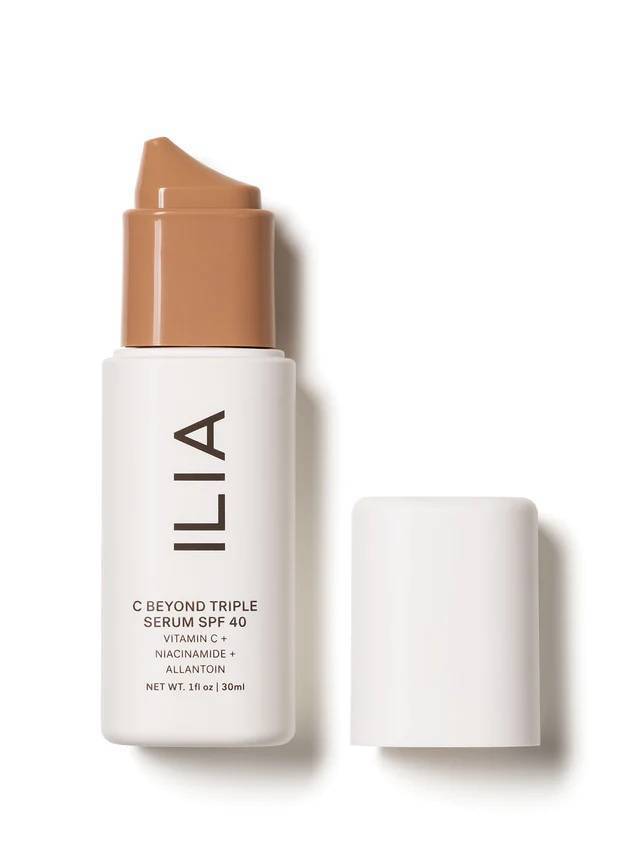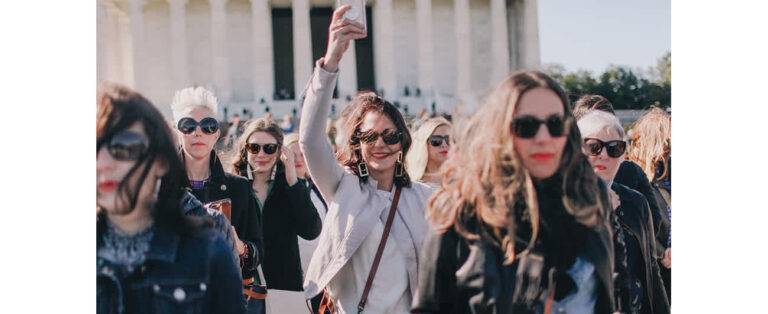Plus why “clean” beauty is such a tough phrase, and how you can make “personal care” a little more personal
Bluedot Living’s BuyBetter column features items we believe in. When you make a purchase through our retail links, we may earn an affiliate commission.
A few years ago, I traveled to Mexico with some girlfriends. Two of us brought cosmetics from brands like Nars and Dior. We wanted glowing skin and enormous lashes and didn’t think terribly hard about how we achieved those results. Our companion’s ditty bag, on the other hand, contained only leaf-embellished products labeled “natural” and “clean.” At the time, I did lots of very L.A. things, like devotional chanting, adding chlorophyll to my water, and taking bentonite clay after eating fish. Still, I was skeptical.
“Why all the effort?” I asked. “You’re not exactly eating your makeup.” My friend said something to the effect of: “First off — you do basically eat your lipstick. Second, think about those tobacco patches that deliver nicotine right through your skin. And, mostly, why would I put something potentially toxic on my body when it’s easy to use something greener?”
My friend’s premise is fundamentally sound. But, after months of research and mountains of frustration, I’ve learned there’s so much greenwashing in the booming, multi-billion-dollar “clean beauty” industry that I’ve decided to reserve the word “green” for sultry, olive-colored shadows. I have, however, come up with some helpful tips I’ll share.
- “Green,” “natural,” and “clean” don’t have any real meaning. Third-party certifications do. Check out our list below.
- There are organizations keen to help you recycle your cosmetics packaging. Keep reading for specifics. And, put a recycling bin in your bathroom if you don’t have one there already.
- Don’t drive yourself crazy! If you use a product every day, it might be worth checking its ingredients against lists of top toxins. If you use it only occasionally, don’t sweat it. Scroll for details on ingredients.
If you truly want clean beauty, you can pick some late-season berries and rub them on your cheeks and lips. Otherwise, there will be an environmental impact in terms of ingredients, packaging, and shipping. If you’d like to add to your beauty bag and don’t want to do research or stress, shop from Bluedot’s Marketplace. Or, check out Credo Beauty, The Detox Market, or the Clean + Planet Positive Collection at Sephora. They, and the companies below, all consider safety, sustainability, and sourcing, and offer products that we think have real virtues. And remember, this is the BuyBetter newsletter; “perfect” isn’t in the name.
Stay gorgeous and happy shopping,
–Elizabeth Weinstein, Marketplace Editor
The Best Marketplace
Credo, a clean beauty marketplace with about 20 retail stores, has clear guidelines on ingredients and packaging. They carry no single-use plastic, including sheet masks, wipes, or plastic sample sachets.
The Most Versatile
I’m a big fan of Axiology’s plastic-free, zero-waste makeup crayons for lips, cheeks, and eyes. The color goes on light, but it’s easy to build and blend.
The Team Favorite
Bluedot’s founder and editorial director both love Ilia. The brand’s SPF 40 Super Serum Skin Tint and C Beyond Triple Serum products make it easy to add sunscreen to your routine.
Saie Beauty
It’s easy to glow when you’re wearing Climate Neutral, Plastic Negative, Leaping Bunny Certified makeup from Saie. Try the Glowy Super Gel, Slip Tint moisturizer, and Sun Melt Bronzer.
The Activist Brand
Beautycounter and its representatives have had over 2,000 meetings with American and Canadian legislators to advocate for safer personal care products. Pucker up with their Sheer Genius lipstick and Beyond Gloss.
A Note About Ingredients
I’m truly hesitant to wade into details on the fraught topic of ingredients in personal care products. The U.S. bans the use of fewer than a dozen ingredients; comparatively, the E.U. bans around 1,600, and some of the brands listed above ban well over 2,000. Some of the items are banned with good reason, or are still being studied. Others may never have been in cosmetics in the first place. The U.S. recently updated legislation in this arena for the first time since 1938. An article that ran in Allure earlier this year gives a quick overview of the Modernization of Cosmetics Regulation Act of 2022, known as MoCRA, which President Biden signed into law in December.
The New York Timescovered the unnerving topic of toxic ingredients in personal care products, and a quick visit to the comments section will show you how frustrated readers were with the reporter’s efforts. Unfortunately, she had an extraordinarily difficult task. She gave very little quantitative information, but there’s just not much out there. However, the article (and comments) are still worth a read.
I will say that I think that many folks might benefit from a visit to their own doctors. A few months ago, I made an appointment with my dermatologist and toted in a bag full of products I used at least weekly. Based on her advice, which came from the American Academy of Dermatology’s recommendations and her own research, I made some changes.
I decided to finish but not re-purchase some items with parabens, PEGs, and phthalates. With her blessing, I continue not to worry about using an antiperspirant with aluminum in it. I remain devoted to a daily moisturizing sunscreen that contains oxybenzone, an ingredient she doesn’t love. I’ve tried other products and I’m still open to finding something different, but I haven’t liked anything else nearly as much, and found myself skipping the sunscreen altogether. My doctor’s take: keep using what I have — skin cancer poses a greater potential risk to my health than the offending ingredient.
At the end of the day, we’re talking about personal care products, and I found that bringing in my own doctor for personalized care suggestions was a relief.








